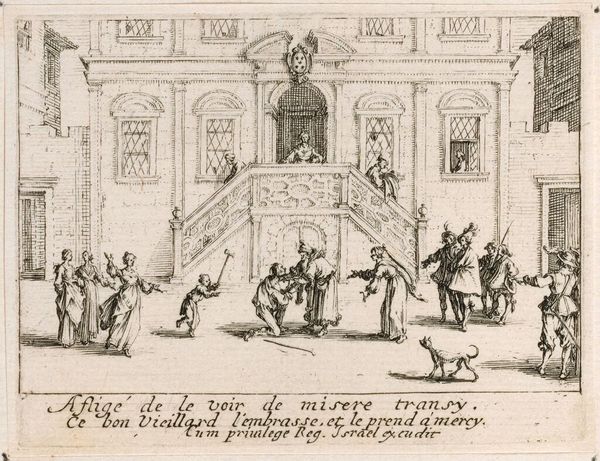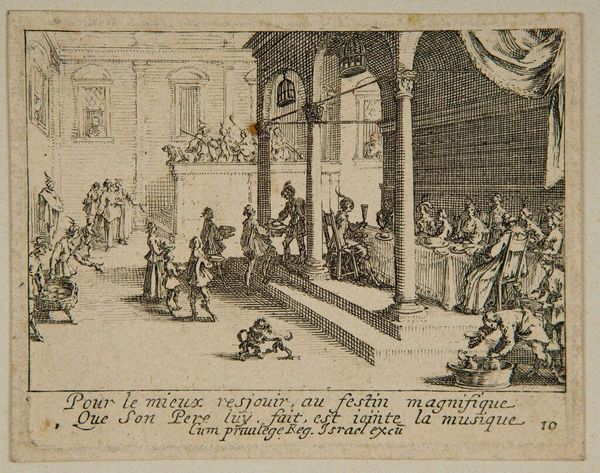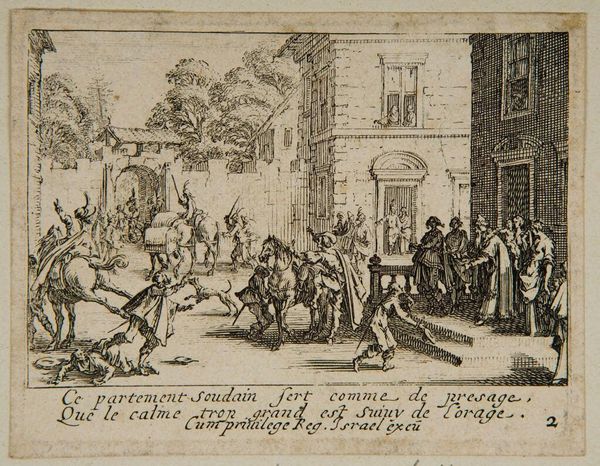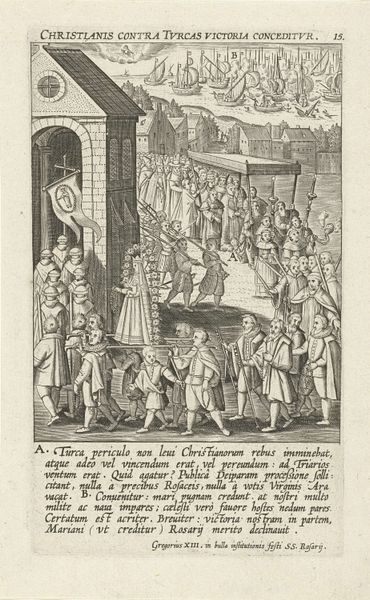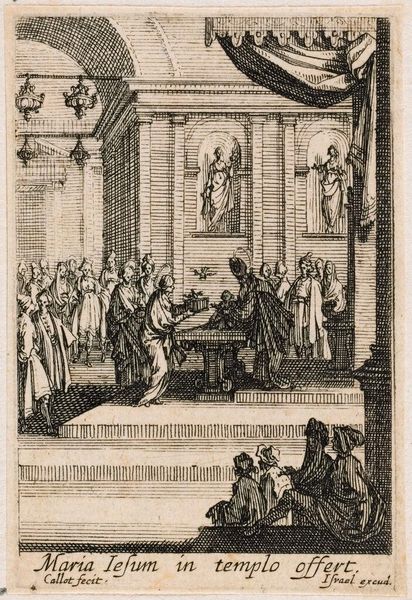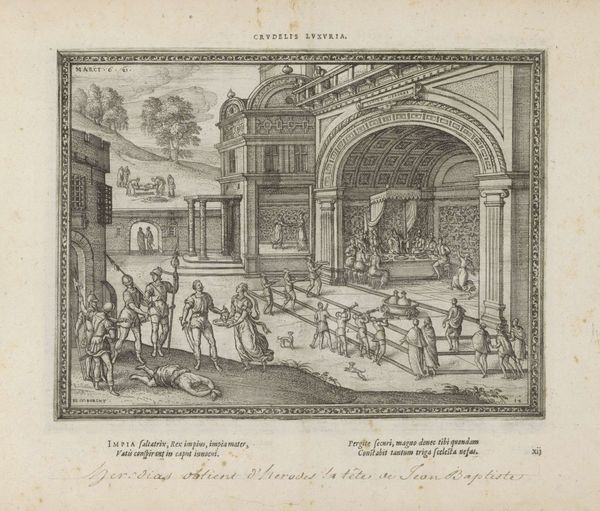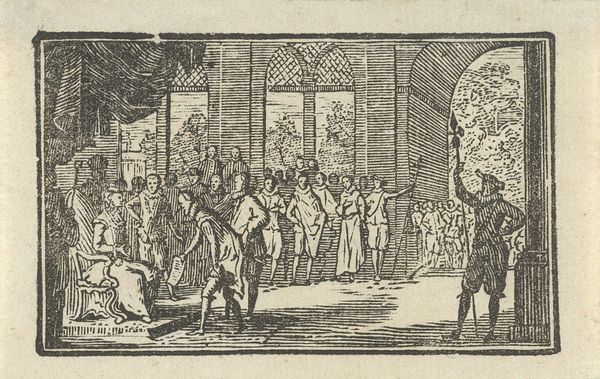
Copyright: CC0 1.0
Editor: This is Jacques Callot's "Returning to His Father's House." It’s a small etching, crowded with figures in this grand architectural setting. What do you see in this piece beyond the obvious biblical reference? Curator: Well, let's consider Callot's historical context. He lived during a time of immense social upheaval and religious conflict. How might those power dynamics influence how we read the prodigal son narrative here? Editor: So, it’s not just a religious scene, but perhaps a comment on societal structures and forgiveness in a tumultuous era? Curator: Precisely. Think about who is positioned where, the implied social hierarchy. It's a lens through which we view not just a story, but the very fabric of 17th-century life. Editor: That makes me see the etching in a whole new light. It's like the architecture becomes a stage for societal roles. Curator: Exactly, and Callot uses that stage to make a powerful statement about redemption and the negotiation of power.
Comments
No comments
Be the first to comment and join the conversation on the ultimate creative platform.
